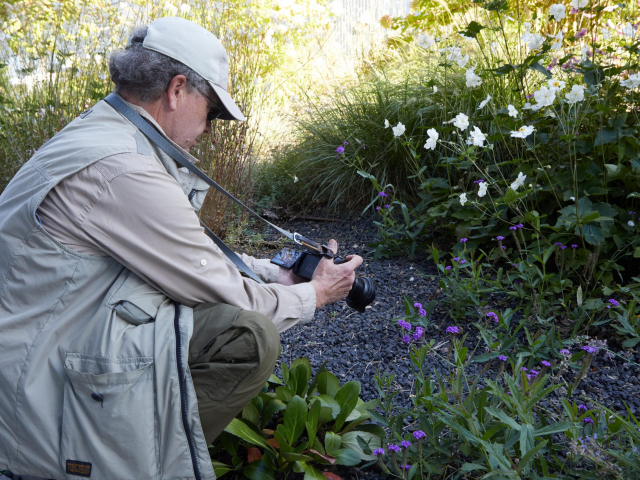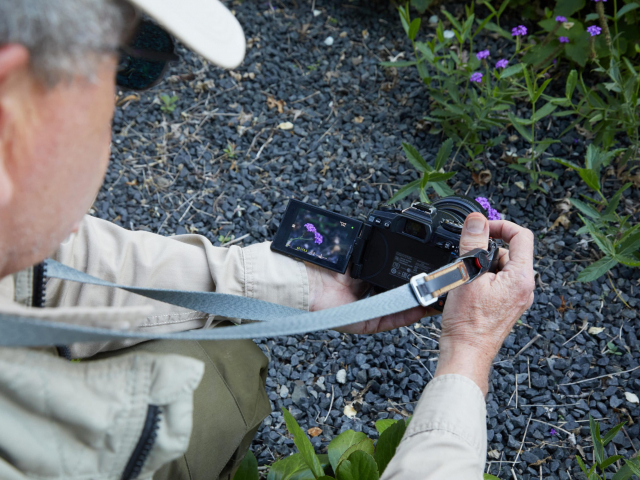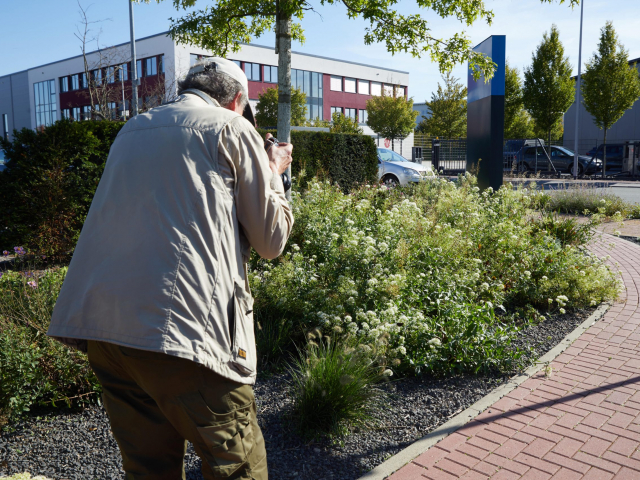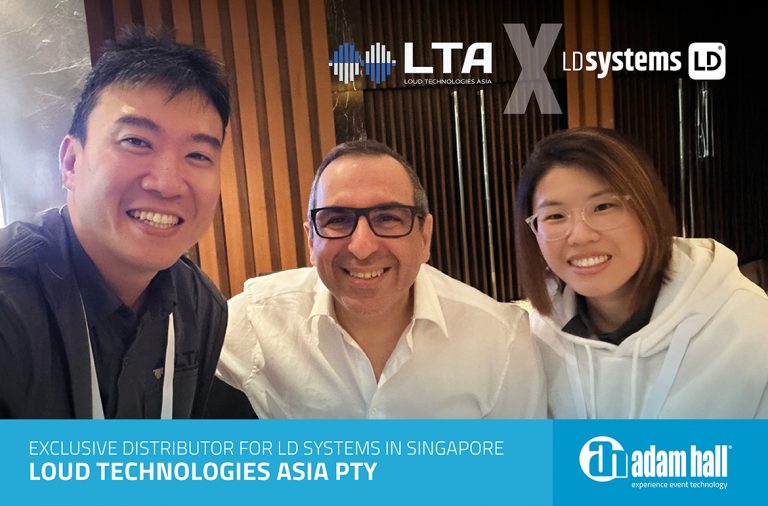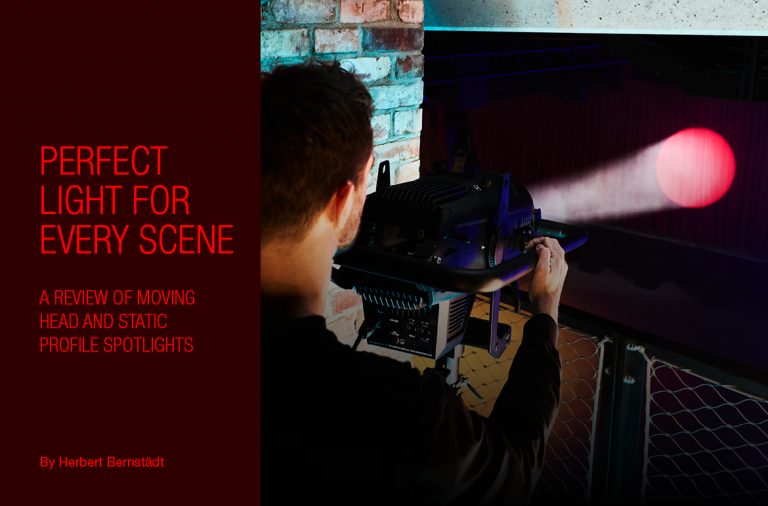Micro meets Macro: An insight into the world of biodiversity at Adam Hall Group
We are all part of nature – and we occupy it through our building activities, both large and small. At Adam Hall Group, we are also aware of this complex issue, and we try to improve biodiversity at our headquarters in Neu-Anspach, Germany, through many small – and some larger – activities. We recently started working with nature photographer Harald Kalbhenn, who specialises in insects and other microorganisms, to give us an overview of how biodiversity is faring at our German site in the Taunus Mountains. In a joint conversation with him and our landscape gardener Andreas Klapproth, we take a look back at the construction of the company site, discuss its effects on biodiversity, and devote ourselves to the many small wonders of nature that take place before our eyes every day.
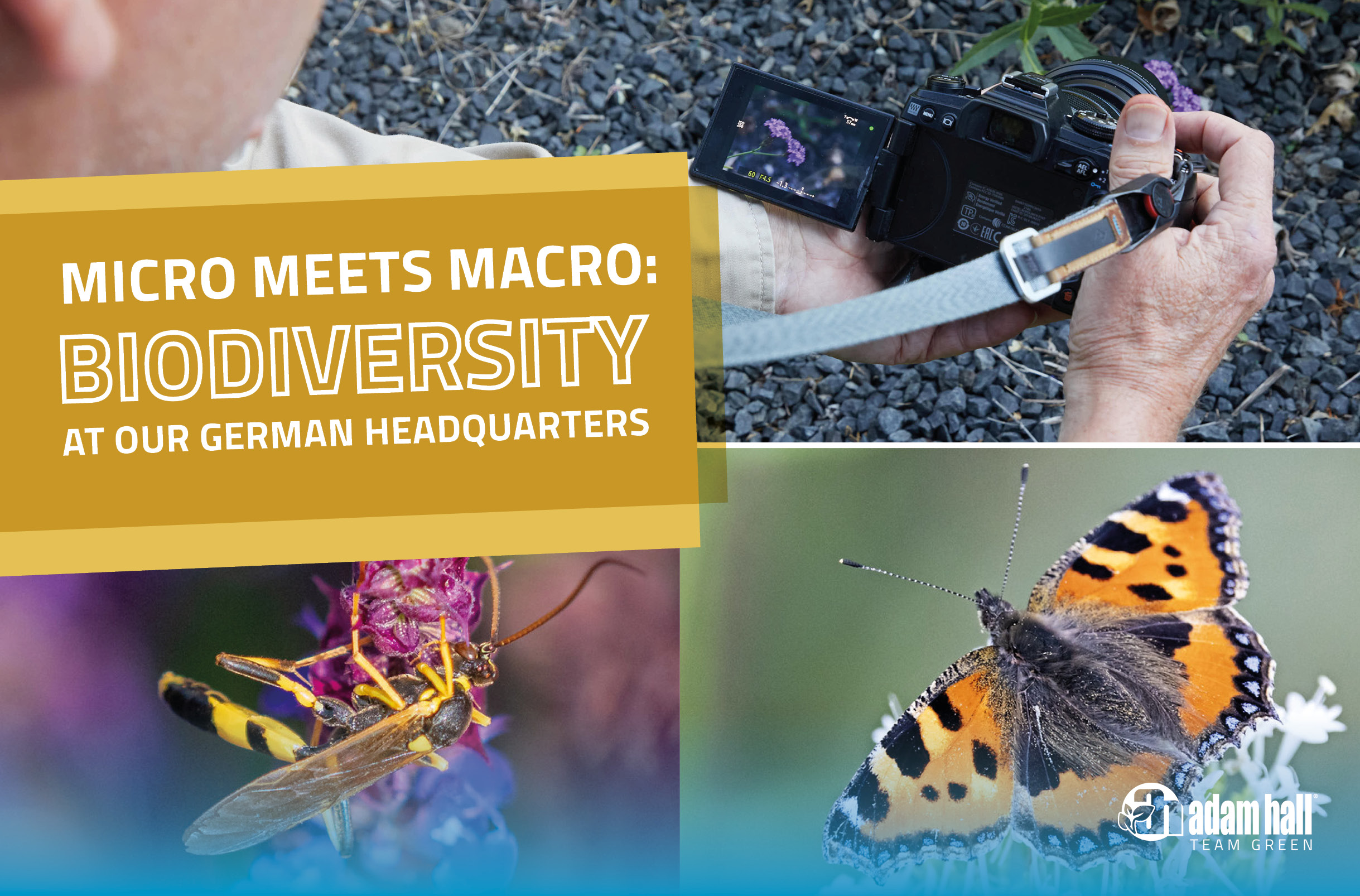
Adam Hall Group (AHG): Mr Kalbhenn, what fascinates you about photographing insects and other tiny creatures?
Harald Kalbhenn: For me, photography is primarily a tool to get to know insects better and to study them in their appearance, behaviour, abilities, and strategies. We still know too little about the nature that surrounds us. At the same time, it is becoming more and more important to understand the complex interrelationships between animals, plants, humans, soil, climate, etc.
AHG: What contribution can photography make to the topics of biodiversity and environmental protection?
Harald Kalbhenn: Photography is fun and educational, but it has no direct impact on biodiversity and environmental protection. Personally, I would like to use lectures, guided tours and publications to draw attention not only to the beauty of insects, but also to the usefulness and diversity of their behaviour, strategies, and solutions.
AHG: Mr Klapproth, what principles did you follow when designing the green spaces for the Adam Hall Group?
Andreas Klapproth: We were involved in the planning and construction measures from the very beginning. The first step was to integrate the large hall of the high-bay warehouse into the landscape and to implement the requirements of the development plan. To this end, the northern earthen embankment was first filled in and planted with trees and native shrubs. Our goal was to create a green network of the adjacent natural areas and thus establish habitats for the native fauna.
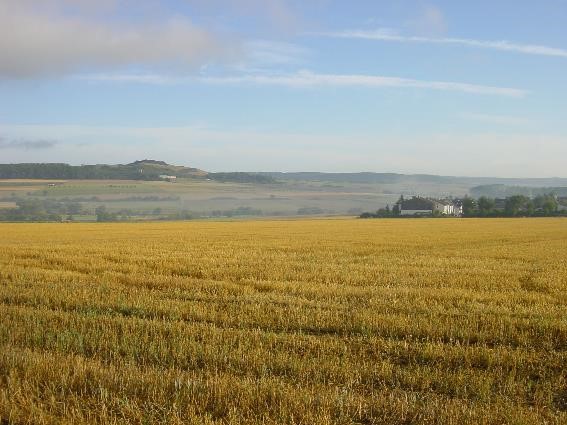
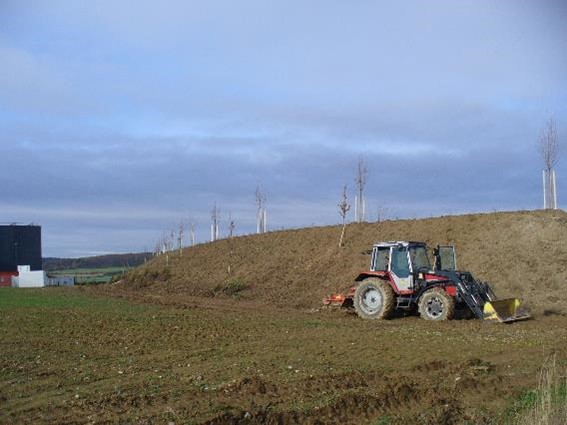
AHG: Which plants did you choose to improve biodiversity?
Andreas Klapproth: When selecting the plants, we placed special emphasis on the needs of insects, microorganisms, and birds. In addition, we selected plants that correspond to the modern design of the overall facility and contrast with the dark building colour and the dark green yew hedge. Depending on the location – you have the sunny side in the south, and shade in the courtyard and on the north side – appropriate plants were chosen. When selecting the trees, we paid attention not only to the flowering effect, but also to a particularly colourful autumn colours.
AHG: Mr Kalbhenn, what special insects have you already photographed at the Adam Hall Group site?
Harald Kalbhenn: The hummingbird hawk moth, with its “hummingbird in flight” appearance, is always fascinating. Due to global warming, this migratory moth can be seen more and more frequently on the outdoor grounds of the Adam Hall Group. My photographer colleague Rolf Stüsser also photographed a very beautiful and rare bumblebee hawk moth on a Centranthus flower here in 2022. My absolute highlight, however, was the very rare Kirby’s grasshopper wasp on a coneflower. This species was first discovered in Germany in 2020.
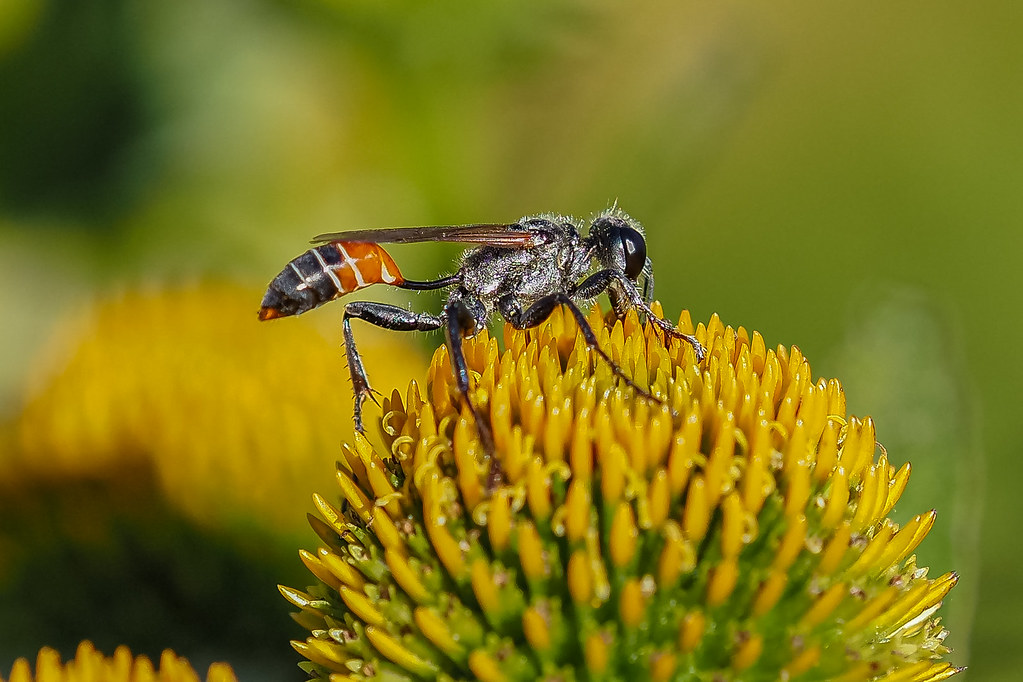
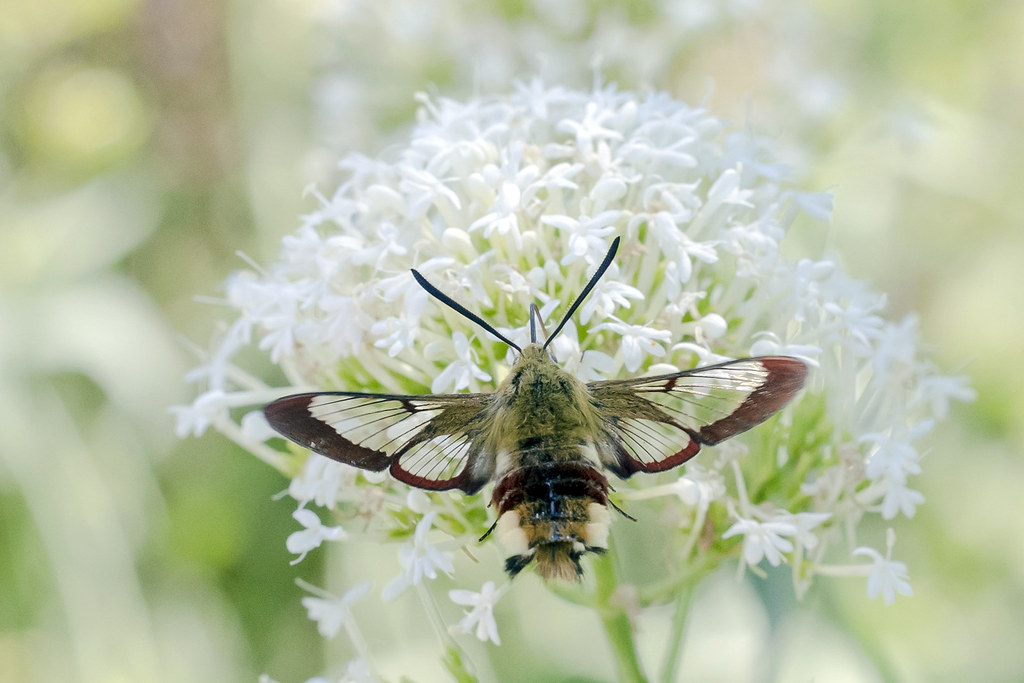
AHG: How do you assess the current state of biodiversity at the Adam Hall Group site?
Harald Kalbhenn: At first glance, the outdoor area represents the modern style of the company: elegant, well-maintained and with rich plant growth. On closer inspection, however, you realise that the design not only functions as an eye-catcher, but also as a habitat for insects and arachnids, which find a variety of forage plants here. I don’t think I’ll ever warm to the robotic mower in front of the Experience Centre, but the white clover still grows below the cutting line, so that bumblebees and honeybees from the hives* also find everything they need for pollination here.
*Editor’s note: Since 2022, around 30,000 bees have been living in specially created hives behind our main building in Neu-Anspach and are making their important contribution to the region’s biodiversity.
Andreas Klapproth: The site has good biodiversity. The extensive green roof, which is not directly visible, also plays an important role here. In addition, the entire property borders on the city park and is therefore of particular importance for biotope networking.
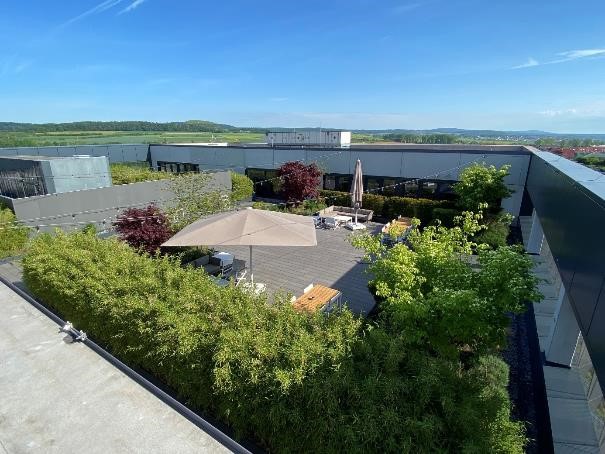
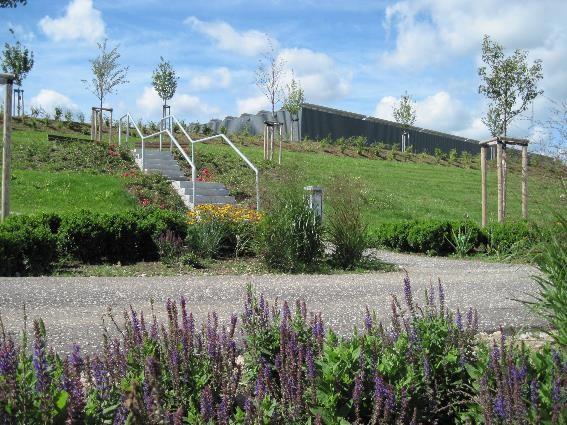
Harald Kalbhenn: The city park is an important habitat for insects. Due to the large flowering areas, a better exchange of genetic information can take place within the species and biodiversity is improved. I don’t know of any company in Neu-Anspach whose outdoor area is so suitable for increasing biodiversity in conjunction with the city flowering areas. In this respect, the Adam Hall Group is taking a pioneering role and it would be desirable if other companies followed this example.
AHG: Mr Klapproth, what potential steps in landscaping do you see for the future?
Andreas Klapproth: Neu-Anspach has a problem with its drinking water supply. Due to climatic changes, the soil water and groundwater available for plants is steadily decreasing. The future goal must be to allow rainwater on sealed surfaces to seep away at the point of precipitation according to the sponge city principle, thus temporarily storing it for the plants.
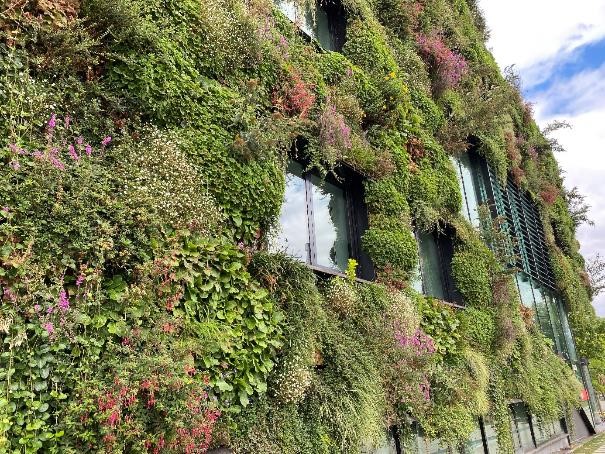
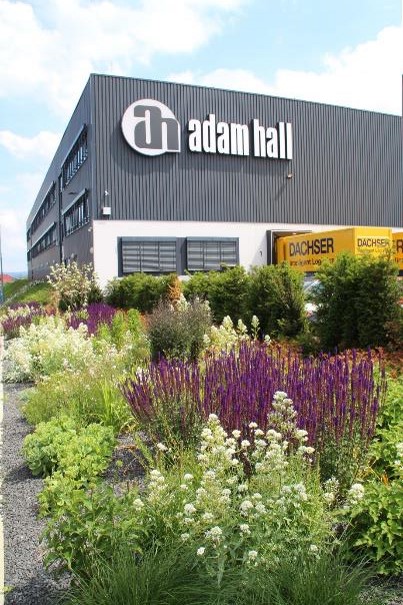
AHG: What recommendations would you give to companies that want to make their green spaces more biodiversity-friendly?
Andreas Klapproth: It is crucial to include the topic of biodiversity and rainwater utilisation in every planned construction project from the very first planning step. There are numerous lighthouse projects for this. With increasing land consumption, for example, the outer façade can also be used for greening. But companies with existing facilities should also consider the issue of biodiversity and commission a specialist planner for the implementation. In general, it is important to continuously maintain the plantings so that they can continue to develop naturally.
Conclusion
The topics of sustainability and biodiversity have been with us for many years. For this reason, we would like to take this opportunity to once again thank Andreas Klapproth and Harald Kalbhenn, who have made an important contribution to our sustainability strategy with their great expertise and passion for nature.
In our new sustainability update, we have summarised the latest measures and progress. If the interview has whetted your appetite for even more photos from the fascinating world of insects, you should pay a visit to the www.naturgucker.de platform. Here, you will find a variety of photos by Harald Kalbhenn and other photographers, including a list of species for the Adam Hall Group’s premises – it’s worth a look!
#AdamHallGroup #AdamHallGroupSustainability #EventTechnology #Biodiversität
Further information:
adamhall.com/sustainability
naturgucker.de/adam-hall


